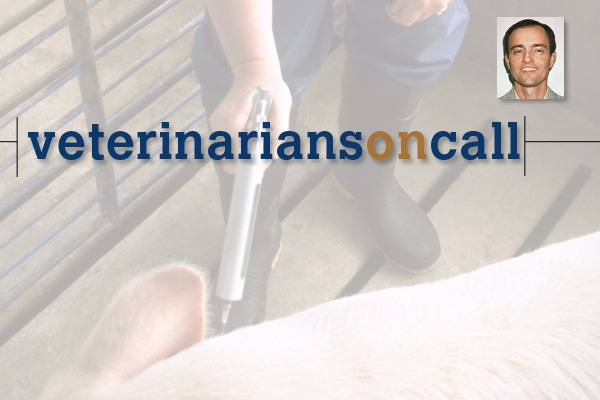Antibiotic use in animal agriculture and headlines about antibiotic-resistant “superbugs” are a common theme in popular media, among activist groups, some legislators, regulatory agencies and perhaps the general public.
December 15, 2012

Antibiotic use in animal agriculture and headlines about antibiotic-resistant “superbugs” are a common theme in popular media, among activist groups, some legislators, regulatory agencies and perhaps the general public.
The topic of antibiotic use and resistance was addressed recently at a symposium in Ohio coordinated by the National Institute for Animal Agriculture. Because humans, animals and plants are treated with antibiotics, all fields were represented and challenged to think more about a “One-Health” community and how antibiotic use affects all health disciplines and the environment.
This conference stimulated the review of two case studies, emphasizing antibiotics used and the role of antibiotic resistance in the decision-making process.
Case Study No. 1
Swine producers are more aware of antibiotic resistance than the general public because of discussing health test results with their veterinarians or diagnostic labs.
Even though antibiotic resistance is a very complex phenomenon, most producers understand that antibiotic use can result in the development of resistant populations of bacteria.
This case summarizes how a resistant E. coli problem was addressed over a three-year period in a 4,000-head nursery in Indiana.
In July 2009, some pigs that died were diagnosed with a beta-hemolytic E. coli, positive for K88 and F18 types. One of the original isolates was sensitive only to ceftiofur — definitely a resistant strain. Some additional diagnostics confirmed only K88 E. coli, and clinical signs were primarily diarrhea within a week postweaning.
Nursery mortality rates were below 2% and management was good, so it was decided to treat pigs individually. However, by October 2009, mortality in one group soon spiked to 7%. Upon arrival, nursery pigs were orally vaccinated for K88. By January 2010, the E. coli strain tested sensitive to neomycin.
But oral vaccination didn’t completely control the problem; therefore, many groups were water medicated with neomycin. Some vaccination timing changes were made, along with changes in sanitation, drying agent application at birth and internal biosecurity. Mortality held to 2% or less, but antibiotic treatments had to be used to keep the problem under control.
By September 2010, an isolate was sensitive to a sulfa product but resistant to neomycin. When needed, antibiotic water treatment was changed to the sulfa product.
By November 2010, alternate group vaccination was done to determine if vaccination was effective. From February to September 2011, the problem was under reasonably good control if measured by mortality rates (1-1.5%). Sensitivity tests in November showed the E.coli sensitive to ceftiofur, neomycin and carbadox.
By December-January 2012, mortality and individual treatment rates had increased; the isolate was sensitive only to ceftiofur, and F18 E. coli was back in the mix. In February, F18 vaccination was added, and in March, pig flow was changed to fill a 2,000-head barn within 10 days instead of a four-week interval. Performance has improved considerably with mortality rates less than 1% in several closeouts, and significantly less antibiotic treatments.
To improve antibiotic use stewardship, changes could include: starting with both F18 and K88 vaccines, more use of K88 vaccination, preweaning and faster pig flow changes.
Case Study No. 2
Pigs from a 1,500-sow unit are moved to a nursery-finisher site at weaning. Pigs remain in a nursery-grower room until 125 lb. Soon after moving to adjacent finisher rooms, sudden death loss occurred in good-quality pigs.
Post-mortems revealed hemorrhage along with some pleuritis in the lung. Cultures were positive for Actinobacillus suis. The bacteria were highly sensitive to antibiotics. The pigs were medicated in the water with chlortetracycline and the mortality subsided.
This problem occurred in subsequent groups of pigs so it was recommended chlortetracycline be used routinely post-movement. This was clinically effective. Bacteria remained sensitive to a wide array of antibiotics.
These cases demonstrate some of the complexity of antibiotic resistance issues. Certain bacteria may respond very differently to antibiotic use (very little resistance developed in the second case study following antibiotic use), and how resistance patterns within a population of bacteria on a farm may vary over time as a result of intervention.
You May Also Like



